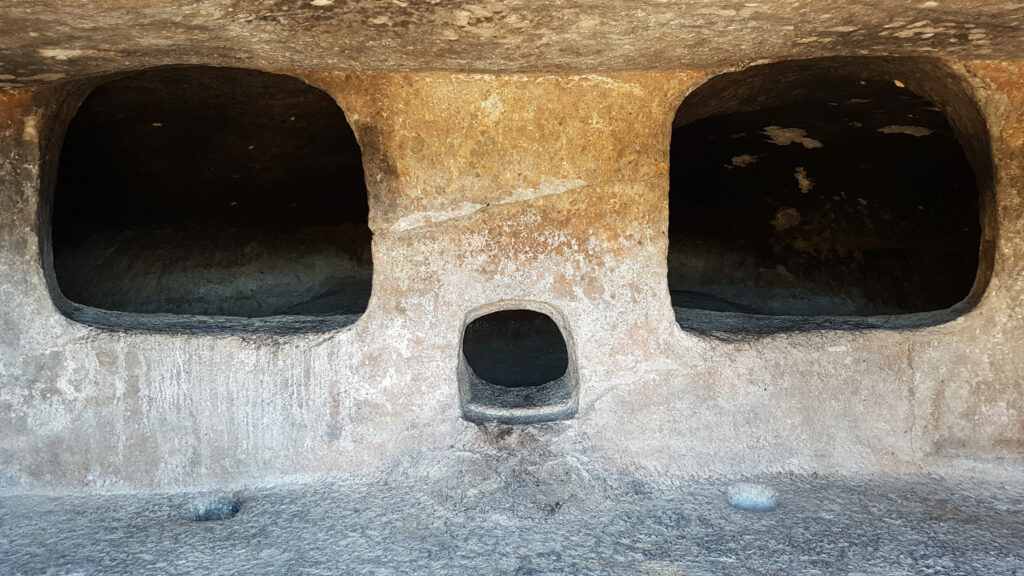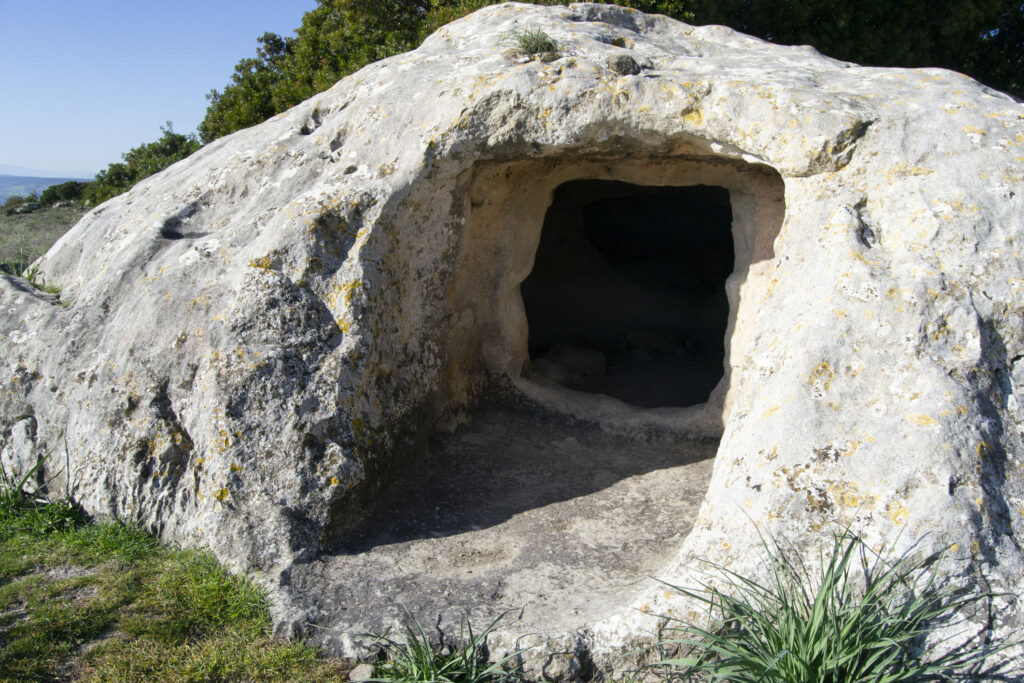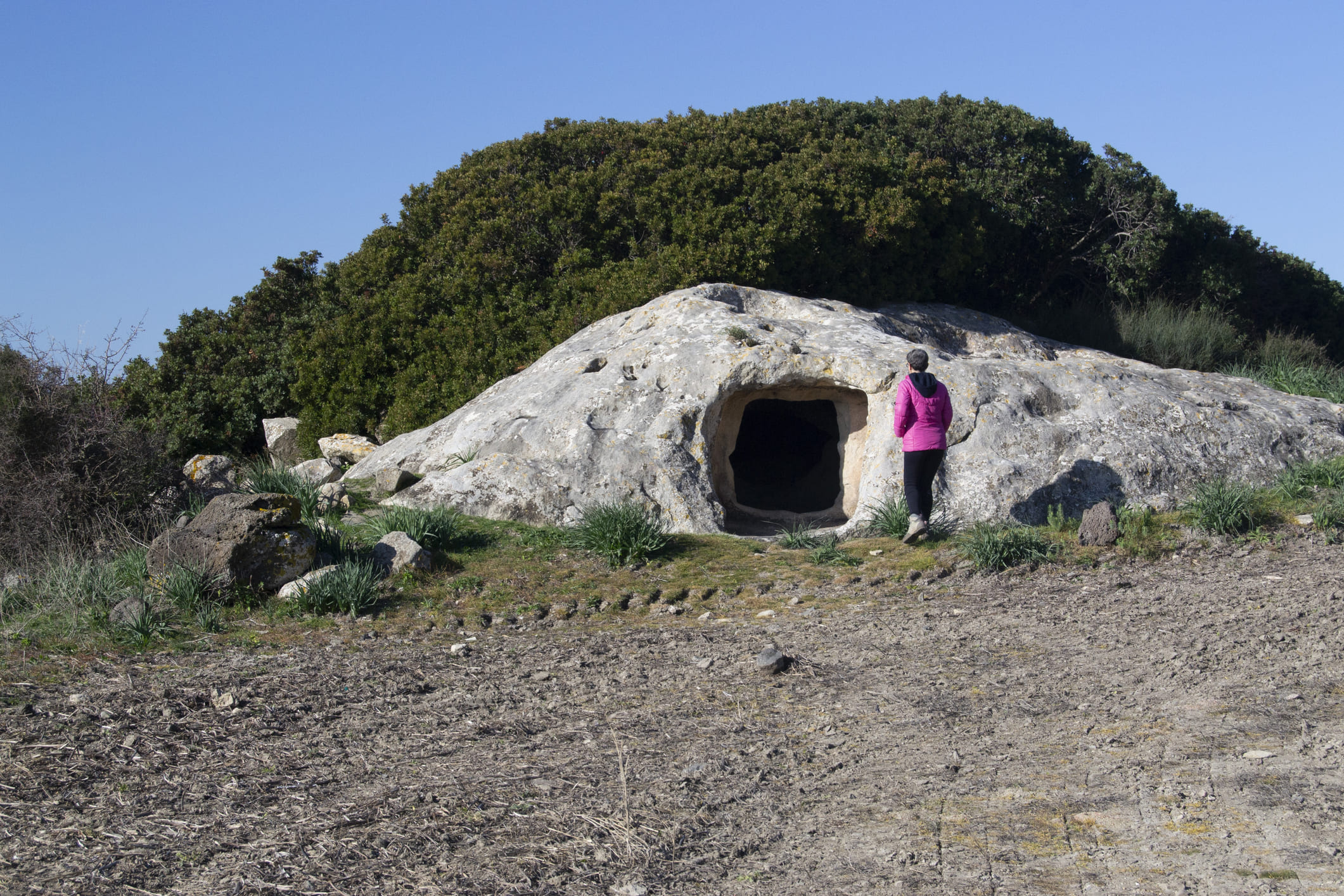We can call them “homes of the fairies” or “homes of the witches,” if we are so inclined. In Sardinia, however, they are known as Domus de Janas, and they are the latest treasure to be officially proposed for inclusion on the UNESCO World Heritage List for 2025. This initiative, named Art and Architecture in the Prehistory of Sardinia: the Domus de Janas, includes 26 monumental complexes that span from the Middle Neolithic to the Copper Age and highlight the cultural system that characterized Sardinia until the onset of the Bronze Age. This period is known for two specific architectural phenomena, hypogeism and megalithism, symbols of the island’s rich pre-Nuragic civilization.
The nomination is based on several criteria, as outlined by the 1972 Convention for the Protection of the Cultural and Natural Heritage, which focus on the sites’ unique contribution to Mediterranean and European hypogeism and megalithism. The Domus de Janas, often referred to in folklore (as we hinted at in our title) as the dwellings of little fairies, are the historical memory of Sardinia, reflecting the belief systems of prehistoric communities. Behind the candidacy, we find the Centro Studi Identità e Memoria – Sardegna Association, and the network of Domus de Janas Municipalities, which include 37 towns and villages.
The submission will undergo examination by the advisory bodies of the World Heritage Committee before being evaluated by the Committee of the 1972 Convention in 2025. Culture Minister Gennaro Sangiuliano explained that the Domus de Janas are “a historical-cultural testimony of exceptional universal value,” underscoring the richness of Sardinian heritage. This initiative, of course, wants to preserve these ancient sites but also ensure that their significance within the broader context of human history and cultural development is recognized.

But what are these almost magical fairy homes? Well, first of all, they are not home to fairies, but rather, to the Dead. Yes, the Domus de Janas are tombs carved from rock, which date back to a period spanning from 3400 to 2700 BC, aligning with the late Neolithic, Chalcolithic, and early Bronze Age periods, including the Bell Beaker culture. The Domus, such as the ones at Anghelu Ruju near Alghero, Montessu near Villaperuccio, and Sant’Andrea Priu at Bonorva, underscore the extensive reach and sophistication of pre-Nuragic societies in Sardinia. Unlike in Gallura, where megalithic circles were preferred for burials, the rest of Sardinia saw the Domus de Janas as integral to their burial traditions, with some sites hosting as many as 38 tombs.
Their creation is attributed to the peoples of the San Ciriaco through Ozieri cultures, highlighting a continuity and evolution in funerary practices over millennia. While specific details about the San Ciriaco culture are limited in the context of Domus de Janas, we know its people contributed to the early development of these structures. We know more, though, about the Ozieri culture, which flourished between 3200 and 2800 BC, a period where the domus became more widespread and sophisticated in design. Indeed, the Ozieri people are credited with the expansion and elaboration of the Domus de Janas, including the introduction of more intricate architectural features and decorative motifs, probably a mirror to their heightened concern for the afterlife and their deeper respect for the Dead.

The development and refinement of the Domus de Janas seem to illustrate a continuity in the ritualistic and spiritual treatment of death: over time, the practices associated with these tombs evolved, reflecting changes in societal structures, beliefs, and interactions with the environment. Their architectural complexity, including their resemblance to living houses, suggests a belief in an afterlife where the physical and spiritual needs of the deceased mirrored those of the living and they were able to connect with the living world.
The decorations carved into their walls —spirals, zig-zags, and bull’s horns—carry profound symbolic meanings: spirals can be interpreted as symbols of the cycle of life, death, and rebirth, which reflect the Neolithic understanding of the continuity between this world and the next. Zig-zag motifs may represent water, a vital element for life and regeneration, and a symbol of the journey of the soul and its purification. Bull’s horns are often associated with strength, fertility, and the divine, indicating a protective role over the deceased and, possibly, a connection to a bull cult, common in ancient Mediterranean religions
False doors, present in about 20 tombs across the island, further exemplify this complex spiritual and religious landscape, as they likely served as symbolic passageways between the world of the living and the realm of the Dead, a concept found in various ancient cultures. They were not meant for physical use but to allow the soul to move freely in and out of the tomb, facilitating communication and offerings from the living relatives.

Interestingly, we know also about the burial practices within the Domus: the deceased, for instance, were often painted with red ochre, a practice seen across various ancient cultures to symbolize the blood of life, and a possible desire for resurrection or rebirth. The inclusion of personal belongings, tools, and jewels with the dead underscores a belief that these items would be required or used in the afterlife. As in other ancient civilizations, this practice didn’t only show respect and care for the departed but also served as an acknowledgment of theirstatus, profession, or personal history, ensuring their identity and memory were preserved.
These aspects of the Domus de Janas highlight quite a sophisticated understanding of death and the afterlife during the Neolithic period in Sardinia: far from being a simple final resting place, these tombs were designed as eternal homes for the deceased, equipped with symbolic protections and connections to the divine. This relationship between architectural design, burial practices, and symbolic decorations reveals a complex cosmology that celebrated the cyclical nature of existence and honored the transition from life to death and beyond.
Through their construction, decorations, and the rituals they housed, the Domus de Janas provide a window into the spiritual and daily lives of Sardinia’s ancient inhabitants and reveal a society deeply connected to its landscape and rich in symbolic expression. These sites remain splendid examples of the architectural and artistic capabilities of prehistoric Sardinians but also help us understand their complex cosmologies and how they sailed through the deepest mysteries of life and death.




























